 My guest on this podcast is author, mentor, speaker and entrepreneur Simon Severino. His new book “Strategy Sprints: 12 Ways to Accelerate Growth for an Agile Business” has been written for anyone who wants to work smarter, not longer.
My guest on this podcast is author, mentor, speaker and entrepreneur Simon Severino. His new book “Strategy Sprints: 12 Ways to Accelerate Growth for an Agile Business” has been written for anyone who wants to work smarter, not longer.
In this interview, we speak about increasing effectiveness, productivity and ways of running a business.
If you want to learn more about Simon Severino, his courses and his books, please click here to visit his website.
THE BOOK
You can grow your revenue and scale your business without sacrificing your whole personal life. It’s all about working smarter, not longer. Strategy Sprints is the blueprint that you need to increase your effectiveness, grow your revenue and secure business resilience.
Using the “Sprints” method, agile expert Simon Severino shows you how to transform your business with 12 assignments or “sprints” that will make you more impactful as a business leader, grow your revenue and make your strategy execution rock. Through these tried and tested exercises, businesses blow the competition out of the water. Strategy Sprints will teach you to identify the bottlenecks that are weighing your business down, turn you and anyone in your team into a sales superstar and streamline processes so you spend time where it matters. The outcomes you’ll master include:
– developing a compelling vision
– mapping out where you can make the most money
– increasing your conversion rates to sales
THE AUTHOR
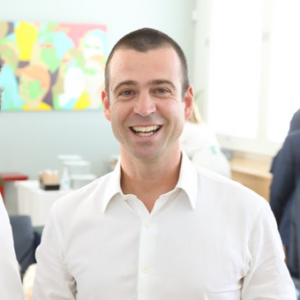
In 19 years of entrepreneurship, I’ve executed hundreds of go-to-market strategies with B2B teams around the globe.
I’ve scaled my own consultancy and have retired from operations. I reached financial freedom and became an investor. Since then I have helped thousands of entrepreneurs reach financial freedom and have a firm that runs without being dependent on them.
Today, I share my blueprints with B2B leaders like you. I’m excited to help you scale faster than ever.
You may also refer to the transcripts below for the full transcription (not edited) of the interview.
Greg Voisen
Welcome back to Inside Personal Growth, this is Greg Voisen, the host of Inside Personal Growth and we have Simon Severino joining us from Vienna, Austria. I was just telling him what amazing town that is, and an amazing place to visit. I wish I was there with you. Hey, Simon, do you have one of your books you can hold up? Yep.
Simon Severino
There Yeah, no is there there's famine, strategies, plants 12 ways
Greg Voisen
to accelerate growth for agile businesses. Simon is somebody who has really helped a lot of people. I actually watched an interview with a really good friend of mine, David Allen, who's been on the show, many times Simon was sitting with him. So Simon's had a lot of impact in Simon, I'm gonna let the listeners know something about you. In the 19 years of entrepreneurs ship, he's executed hundreds of go to marketing strategies with b2b teams around the globe. He scaled his own consultancy and have retired from operations I reached financial Freeman became an investor. Since then, I've helped 1000s of entrepreneurs reach financial freedom and have a firm that runs without being dependent on them. Today, I share my blueprints which we're going to talk about with b2b leaders like you out there. And for all of you who want to learn more about Simon, go to strategy Sprint's dot com that's STR a TGY SPRI en ts.com. Well, Simon, a pleasure joining you and you joining us, I should say, and speaking with our listeners, spending a few minutes about this, you know, you start this book off with an introduction of yourself and you state that your mission in life is to help sprinters and you'll define that realize their dream, that's really every entrepreneur out there, I think tries to be a sprinter. They don't always successfully become a sprinter. So to set the state for our interview, can you tell us about yourself and sprinters? And why is it now that you've retired, and you know, you pulled back that you're really wanting to help sprinters?
Simon Severino
First of all, I am so impressed by the level of preparedness, I am on four podcasts every day, you are one of the rare people who actually read the book. And I'm very impressed. Thank you. So yeah, what is this printer? If you think about every entrepreneur, create something out of nothing. That's what every entrepreneur does, but not really every person on the planet. He is a sprinter, a sprinter, somebody who has has it in themselves and needs to build it. They are utterly unhappy. And they literally get sick. If they don't get it out there. If they don't build it and ship it, build it and ship it. You see these people sitting in meeting and they go, how can I get out here I need to build something. I didn't do anything. Today I was just talking. These people are the real sprinters, they have something Nietzsche would say they have a star dancing in their chest, and it needs to get out. It's their song. And they are utterly unhappy if they don't build it and ship it, build it and ship it.
Greg Voisen
I'd say most of them, Simon, they're curious. You know, one thing I found is I'm a serial entrepreneur myself. And I wouldn't be doing this show 15 years 920 podcasts, but wouldn't be for curiosity. I love learning from people like you. And most entrepreneurs do love learning, they love to understand more. And you know, your book really helps people do that. You know, you've done a lot of things and all my listeners have to do is go to your website and they're going to see video after video of you helping people that they're going to know because you've actually had very noted individuals or organizations you've helped all they got to do is go to that website. And again, I'm going to repeat it because I think they should go strategy Sprint's dot com we're gonna put a link to the book as well. But in your TEDx speech, you called B a category of one. And you share a story about playing football as a kid in Italy, and calling yourself vanilla. Right? Well, vanilla means to most people it's like, well, it's a neutral flavor. It's got not got a lot of jazz, you know, it's like it's it's there. If you would share the story with our listeners and how This relates to business can't be vanilla. Yeah.
Simon Severino
So when FedEx asked me to share something, I shared that when I was playing football as a kid, I was literally afraid to win. And, and I was afraid to score the goal. Right. And but I was in a condition where you are expected to score the goal. And I was like, no, no, coach, hey, yeah, let me let me play reserve today. Let me sit on the bench for a while. And it goes, sitting on the bench. You, You are our main, our main goal maker. Hello. There is no bench for you, darling. You go in there. And it was a no, no, no, no, no coach. And so I was afraid of winning. Because sometimes we say all the entrepreneurs, you know, they're afraid of rejection. They're afraid of failure. Yeah, maybe some. But most of us were afraid of winning, we are afraid of the, of the force of nature that we are and of showing that to the world and showing up every day and being unapologetically exactly that. Why do you
Greg Voisen
believe that? That is they call it afraid of success? Afraid of winning success? Yeah. Why do you believe that? So look, you've interviewed hundreds of entrepreneurs. Why do you believe that? So is it because they're not enough?
Simon Severino
We, we identify with stuff. So everybody's, and everybody's more than enough. Everybody's perfect. There is the divine in everybody. Right now, there is limited energy right now in everybody. And there is sorry, unlimited energy in all of us. And there is unlimited potential in all of us, every time in every moment. So there is nothing missing in anybody.
Greg Voisen
And although their ego tells them they're not enough, their ego says they're not enough, not their soul, their soul and listen to their intuition would never tell them they're not enough.
Simon Severino
Exactly. And so it's exactly it's the ego. So when you identify with something finite, like for example, your personal ego, then you have limits. And so they've and they heard things in their from their parents, and they heard things from society, they internalize, they take it as if it was real, and then it becomes real. So the limits are really between their ears. But if you identify with them, then they limit you, they limit your energy, they limit your confidence, they limit your, your everyday, there are no limits. There are really no limits. And entrepreneurs show it every day, they create something out of nothing. The only thing that they really need is a blueprint for how to steer that plane. That's the only thing you don't learn in entrepreneur university, because there is no entrepreneur University. And the whole education system is not meant to. To prepare entrepreneurs, it's meant to prepare normal functioning of normal processes, not to disrupt. And so the disruption part, we have to learn it ourselves. It took me 20 years, it's in the book, you can show the carpet, and go directly to the blueprints and checklists, you will just get get done faster.
Greg Voisen
Well, I think it's so fascinating because in our educational systems, whether you take finance, or you take marketing, or you take any of these courses, they're all fragmented. But to be able to put the dots together, like you have is a different story all together. It's like what is how do I it's one thing to have music on the sheet. It's another thing for an orchestra leader, to have the orchestra play in synchronicity and make that beautiful music. What you do is you help people make beautiful music, by not only giving them the music, the music, but helping them become the greatest orchestra leader they could become. And you in your section determine who you serve. You shared Ernest Hemingway, great quote from him. The only kind of writing is rewriting you said, speak with us about Hemingway's approach to writing and why it mirrors your approach to business because I think I already know what it is what it is, but I'm gonna let you say,
Simon Severino
Yeah, most people when they write their first book, they think oh, writing is exciting. Yeah, the first draft, the second, the third, the fourth, the fifth, the sixth, revisiting with your publisher with your editor that's just refining, refining what you already have written 80% was there and the rest is working on those 20% Business is similar. Most, most of us they start something and then it doesn't work and they pivot and then it doesn't work and then they start the next They start the next and then they start the next. What we have clients do in this in those 90 days in pick one of the things that you're doing the one that is working best, just one, and only optimize that for 90 days. And in the beginning, there was just one thing. And there was a you will be surprised. We will double your revenue 90 days by just focusing on that one thing and they go it's impossible. Okay, challenge accepted. And then. So on average, for example, typical consultancies, small consultancies have a 17 to 20 Different kinds of offers, because they say yes, to many mandates, too many requests. And so they offer a whole range of different things. Of course, you cannot optimize 17 things. And that's why profitability is low. Burnout is high turn, the fluctuation of your team is high, and nobody's really happy. And you are not crushing it, and you're not scaling your business. So we picked the one horse that it's running best right now. We optimize 12 weeks, we optimize it 12 times, and then they go, Oh my god, I never thought that just with this one slice of the whole thing we could do so much. Because this is now about rewriting. You just take the draft that you already have this week, where are you already winning, you don't have to create anything, just what you're doing right now. And then each week improves one little part of it. Now imagine you do this for 12 weeks. Imagine you improve just 5% per week, which is easy to do, improving one part by 5%. And imagine how that compounds. That's the magic of just rewriting and people say yeah, it sounds maybe it's boring. Maybe it sounds boring, but the effect is not boring. For Hemingway, maybe it was boring to sit everyday at the same time writes his 1000 words every day. Maybe it was boring. But when he was done with his parents, man, his crib, his his His books, His short novels, and they were out. Hey, we are excited.
Greg Voisen
Yeah, you're you know, the approach you take with the systematic. In your case, we're going to talk about strategy sprint compasses, is is really, very well thought out. Because 5% over 20 weeks, let's say it's 20 weeks is 100%. All you got to do, man, and you speak about strategy, sprints, compasses, a model that shows a quick glance of where your business is, who around you and where it's going mean, who's around you, where's it going? Can you speak with our listeners a little bit about the compass, and how it can be used, and the daily, weekly and monthly operations of the business. Now, for those of you who don't know, we're gonna have a link to the book. But when you go to the website, you can actually download this. And I think I want to recommend that you do that because you want to have it in front of you. When you're referring to this.
Simon Severino
You did not just started the book, I'm now double impressed. You even started the website. That's the level of preparation of, of this person, everybody. So the three habits daily habit, weekly, habit monthly every day answer the question, What the heck is really in my control? When outside really nothing is in my control. Like right now the markets, the geopolitical situation, what your clients really need, none of them is in your control, your sales, not in your control, your hiring, not in your control. Sorry to say, but it's really not in your control, you can give your best but it's not in your control. So the question is what is really my in my control? And it's really three things, the daily habit weekly and monthly habits. daily habit is how do you spend your time this goes back to David Allen and personal productivity. So the daily flow tool is you write it down? What did you do today? 678 1214, etc. What did you do today? And then it asks you to question before you close the day and design the flow of tomorrow. So before I close my computer, it asks me, Simon, of all the things that you need today, which one would you delegate tomorrow? And the second question is, Simon if you would live more freely and more intentionally, what would you do? Simple questions, but you just take five minutes every day to answer them. You will soon find the pattern of things to cut to automate to delegate. And this is how you grow businesses. That's exactly the scale the smallest element of the daily work of scaling your business. And then everybody does this in your team because they see you doing it. And now they are hiring, delegating, automating, etc. This is how you escape globally. And it starts just with this daily habit, and there is no situation where you cannot do this daily habit. Second thing that is always in your control, even when the times are crazy, weekly habit, get your real time dashboard, get your three marketing numbers, three sales numbers, three operations numbers every seven days. So they are in real time dashboards are we build it for our clients, it's just three things and you see a current target. And you see the difference. And so everybody is looking at these three things. So what happens now is that you get the weak signals. For example, let's say Google has changed the algorithm and your ads are not working. If you don't have this, you will be surprised one month later, when you have already wasted 15k. If you have the weak signal system, you will see it latest in seven days when you reflect on it latest. And so you have saved 15k You have the weak signal or something is going on there. Let's look oh, they change the algorithm because the cost of acquisition just doubled. Something is wrong here. Let's look at it. And let's act upon it. So it's still in your control. If you know it three days later, it's not in your control if you know it 30 days later, because you don't have the time to act upon it. You wasted 15k days over.
Greg Voisen
Yeah, it it's the same analogy. And I love that you're using David Allen, David Allen being a good friend. I remember going to workshops before David Allen was even big with David. And, you know, he would talk about these things that are coming across your transit your inbox, right? Because we're always getting things in our inbox every day, and how we're managing them. And what has the highest priority, right? What's the most important, and what you're talking about, unfortunately, gets delegated to the least important before you know it, the company's spent, like you said $15,000. And it hasn't brought in the highest return, because they're not checking on it. And it brings me to the analogy of this. You know, so many times people when a plane leaves Vienna, and it flies to New York, if it's literally off by one degree, it misses New York by 1000s of miles, right? So similarly, in avionics, when you're flying a plane, and you're trying to hit your target, you better make certain that your every time that plane now automatically Simon as you know, adjust the plane to make sure that it lands at LaGuardia, right? It's not something that you're waiting and going, Oh, well, I'm gonna make this big adjustment. I'm making marginal adjustments every minute that that planes flying. And in your section on the CEO reality you tell a story about one of your clients related to CEO the key performance indicators? This is right in that alley, KPIs and you state that no one knows. And KPR or the associated test, can you briefly tell the story? Tell the listeners that why these KPIs are so important, you know, key performance indicators? For those people who don't know, but most of my listeners
Simon Severino
know. Yeah, if we stay with your example of the aviator crew, now you're pilots and you're you're flying an airplane. What do you want to know? You want to know in real time? Are we flying in the right direction at the right pace? what's around us? Does it matter or not? Next Loop again. Next Loop again, if you can automate it, you automate it. Or you want to also to have a human backup control to see that everything is running badly. So that's when you fly a plane. Now, if people listening right now think of their business like a plane. How many have these loops in place? And how many are just flying blind and hoping that they land where their target is some of them don't even have a clear target? How many have a clear vision in three years this is where we are. So that will be that your target? And then how many have closed loops? Small frequent loops telling them hey, you are nearing your nearing you are at the right pace. You're in the right direction. We are at the right pace. That's the weekly let's the weekly dashboard. With the metrics on there. Some metrics are more helpful than other most people if I asked them right now. Your business marketing metrics, how many People were on your website this week. How many of those want really to buy something? And how many did your team call versus not call? That would be three marketing metrics that really matter. Yeah. Yes. Now everybody listening right now writes on your sheet of paper, wherever you are right down in the sand. The number do you know these three things? Yes, no. sales numbers. How many sales conversations happened this week? In your team? How many did you close? And what's the, what's the dollar value or euro value? Wherever you're listening? Australian dollar value? Right there down in the sand? Yes, no. Just three, three metrics. We're talking just three metrics. And then the operations number. How many people this week, how many clients of yours were pierced? How many became superfans? And how many send you another client client referral. This just having these 333 numbers. And I'm not even creating the specific numbers with everybody listening, just the generic. If you have just these nine numbers in place with the simple dashboard, which can be a spreadsheet, you can use hours if you need one. Just having these three numbers in real time now you are not flying blind. That's the power of metrics. You want to know. Are we flying in the right direction at the right pace? And that is called Velocity? It's not just speed. Speed is not good enough. Speed might be in your example. Yeah, we are going 800 miles per hour. Yeah, but not to LaGuardia. So I don't care that we are going very, very fast. But we are in the wrong city. Right. Right. So that's velocity is direction, including speed. And that's the difference. Well, I think that's brilliant.
Greg Voisen
I think the important thing you mentioned is, you know, look, this dashboard, whether you go by a dashboard system, and you feed your metrics in it through QuickBooks, or through Pipedrive, or Salesforce, or
Simon Severino
whatever your time, save your time download is the free spreadsheet. It's a simple spreadsheet. Okay,
Greg Voisen
so we're gonna send them to your website, again, to download the spreadsheet. There are I agree with you, I would agree that having those nine metrics are critical, whether it's Google adspend, or Facebook ads vendor who your clients, knowing how many of your salespeople are making calls, are they unhappy? Are they happy, all of those things are hugely important to knowing where your company is going, how you're going to get there, and what needs to change to allow you to get there, you know, what has to change. And you state that productivity is about creating freedom, and productivity growth leads to more freedom, speak with the audience about maximizing productivity. And if you would share with us, the top three systems to maximize productivity. It sounds like a David Allen question.
Simon Severino
Yes, I learned it. And I was inspired by David Allen's GTD method. And I had to apply it to organizations and teams who run businesses. So we take those principles, and we apply them now to running a whole business. Because Because David said, Hey, personal productivity is not about ticking off more boxes, that doesn't make you more free, that doesn't make you more fulfilled. So it's much more about being in the moment, not having too many milestones, just having next actions. And this system that reminds you of what's next. That's the GTD method now applies to how to run a company. That means that you have a huge list of stuff that you could improve, but you pick only one, the one that solves the next bottleneck. That's team productivity. And how do you know, there is a set of questions that we share with our clients to identify the bottleneck? For example, one question is, if we Tenex the number of clients next week that we serve, which part of our business breaks first? Is it the client onboarding process? Is it the payment process? Is it the delivery process? Which part is it is and sometimes the old on Android, I don't even have a client onboarding system, alright, then you cannot even 3x Because you will break very soon. As soon as you have three more clients, you're everything breaks and you go back to manual. So this is how you identify bottlenecks. And it's a very important question and that's how, what is the first step? The second step is then to solve only this bottleneck until it's completed, not 95%. Not 98%. Solved. 100% solved. Then, you enjoy life you celebrate. We say celebrate progress every week as a team, celebrate yourself with it, and then do nothing And then next week in the next print use of the next thing. And that might be that you just worked three days this week, but you will have really solved a big problem. That's much better than doing a vast array of activities that really hit Hypno. Home. So that's the second thing. And the third thing is having a cadence of doing this, ie the same way every week. So with our clients, we share our, our meeting cadence, and they find it very helpful to have specific meetings in a specific order, because those informations and though those decisions, they feed inside the next meeting, sometimes people have perfect meetings, but they are in the wrong order. So you don't have the the decision making data that you need in that moment in that meeting. That's why sometimes it's just rearranging the order of things.
Greg Voisen
Well, those three points that you made are extremely important. And what I like about how you relate this to the listeners, is the simplicity, it doesn't need to be super complicated. I like the whole idea of mapping something, because the only way you're going to get there is to map it. I like the idea of having a dashboard, because the dashboard is something you know, it's like the dashboard in your car, how fast are you going? How much gas is left? You know, can I make it to the next destination, all of these are in some way, you know, look, we're so used to notifications. But these are important notifications that are coming across us. And I want my listeners to really get there, what Simon is saying is not just important, it's critical. Because, you know, if you're driving from San Diego to Las Vegas, and you know, he only got a half a tank of gas, and you try and make it on a half tank gas, you're gonna run out, and you're going to be stuck in the middle of the desert, and 105 degrees, 110 degrees. And you're going to say, Oh, I didn't bring any water, I didn't bring any food. I you know, my point is, you're gonna get end up stuck on the side of the road. And you're not going to make it and what he's talking about is, let's make sure we get there to the destination. We enjoyed it, we have the freedom. And we're celebrating our successes result of navigating and make sure we had everything on boarded. We knew what we were doing, you state that the complications of the business make it difficult to measure sales and marketing efforts. And that value ladders, it is important to earn the trust of your audience speak with us about the value ladder and the five steps required to create a value ladder.
Simon Severino
Yeah, so in week, one of the 90 days sprint, we have our friends map out how they create value. So there are a couple phases, right? When do people see you for the first time awareness stage? When do they say Oh, I'm interested, show me more interest stage. And then when they get really engaged to use your tools, talk to your people all the time engagement. And then there comes a point where they are ready for sales 80% Ready. And then there comes a time where you close them says conversation closing. And then there is a time where you deliver on what you promised in the closing delivery. And then there is a time where you retain them upsell cross sell. So if you just map out the stages on one page, and we have a simple blueprint for them. So it's the it's easier for them to do. And there is a checklist. And if they're not sure it helps them really map out their business on one page. Now that it's on one page, we call this the value ladder, because in each stage, you create value. And because you create value, you invite people to move with you to the next stage. That's an organic, good flow. You can call it a customer journey, it just is a good way of creating value so that people want more with you more commitment more, having you as part of their life. Going forward, deeper, more. That's that's the value letter. And now that you have done this, now every week, we will improve one conversion rate from this stage to this stage, from awareness to engagement. What's the percentage? We had 400 people aware? We have 20 people engaged All right, what's the percentage? How can we slightly increase it this week? What can be the experiments we ran this week? Quick things just to see if they improve that conversion rate. Next week, we improve the next conversion rate from awareness to sorry, from engagement to highly engaged and to 80% ready to buy and to closed.
Greg Voisen
It's great. Everything you're saying should relate so many to my entrepreneur listeners and I and that's the bulk of the people that listen to the show. So if you're really soaking in what Simon's having to say it's an extreme value and something that, you know, you can get off his website, I'm going to keep saying that he is offering many of these things for free to just go there and download him. And that and then on top of it to get the book. I mean, you don't have to consult with Simon, but if you want to you can. The reality is you can go there and you can sign up, and he's got a team of people, and he'll help you through all of this. But you certainly can do this on a kind of a DIY basis. That's what he's offering, you know, get the book get the good, the good is spreadsheets, download those, you know, in chapter on predictable sales and reaching people more you state that during COVID 19 pandemic, almost every business and industry felt at least temporary disruption of cash flow. Guaranteed doesn't matter. It was fortunately we're we're seeing a near end mark to pandemic hopefully here in the US, and especially California. Now that you're on a new normal, what advice would you give the business owners listening to us to kind of re cover from the cashflow problems brought on by the pandemic? Now, in some businesses, Simon, and you know, this, you're certainly not ignorant. The sales went through the ceiling, you know, all you got to do is look at the pharmaceutical companies or look at the test kit companies, or look at any of those, if you're investing in the stock market. You know, I put money in Maderna. And it just exploded. And even though it's not the same as it was today, it still were seven times what I paid for it. So the reality is, is that some industries exploded, but most were impacted negatively cash flow, restaurants and manufacturing and chain supply and all that. What advice would you give them?
Simon Severino
You know, I'm so happy that I have my daily habit weekly, with a monthly habit because that's exactly what they're built for. I write down how I'm using my time everybody does even my team, so we know how to free up our time. We know our marketing numbers, his numbers and operations numbers every week. So I know what's going on, Are we flying in the right direction, what's going on around us do we need to change something or change something. And the monthly habit is looking at the whole landscape, doing competitive analysis. And then sprint budgeting means cutting costs on the left side where we are losing against our competitors, reinvesting those costs on the right side where we are winning against those competitors. With these three things, this is how you navigate these very funky times. And as you said, not just you get faster to pivoting and going from shock to unfreeze to, to activate your superpowers again. But you also have enough time free and cash free to use the opportunities at hands. Some of our clients they've pivoted, and as you say they've used the opportunities, I have probably 15x My my portfolio, because there were so many opportunities over the last two years. But it only happens to you if you have enough cash ready. And that's you know, that's cash flow management. And that ties back to the three habits because you look at the money flows in the right way you look at the profits in the right way, you have the right numbers at the right time. And then you see all there's something coming in here, let me free up 30% cash. And then when the opportunity comes, you are ready. But you're only ready. If you have these three things in place. If you don't have them in place, stuff happens. And you are just reacting you are you are in a trance, you are in a shock, looking at what's happening. And then other people why while you are looking at the oil prices going up somebody else who has these three systems they already bought for stock for energy stocks, and they have just doubled in three weeks. And they are reusing that cash and reinvesting in their product and moving forward. So that's the difference between having a sprint system to run your business or not.
Greg Voisen
Well, I remember having Rita McGrath on the show, and her book was called seeing around corners. And I've had many people who have think tanks, think wrong. Greg galley and Mike burns. And the book is actually called think wrong. And the reality is, you know, forecasting, which is kind of what you're talking about. You're saying I have a tool that in the present moment gives me analytics to forecast into the future, what I need to change to optimize my profits in my business and optimize my human resources, wherever they're applied. And for whatever reason, for those of you just heard What I said, you should take heed to that because in essence, the tool, the strategy, sprint tool, the tools that Simon's offering up to you actually do what I just said. It allows you to see around the corner and see what's coming. And if you can see what's coming, you can prepare for what's coming and move right, move left, go forward, whatever it is that you need to do, what in your estimation to strategy spent do effectively, that some of the competition that you have, does not do? Well? Why do you believe because look, there's, you know, I think I asked you this when we did our pre interview, the guys that do strategizing, okay, you know, out yes, there's all kinds of people out there who have tools. Why is strategy sprint? And I think I know the answer, I think, because yours is simple. You know, you've you've really simplified it. And that's what people want. They want a simple tool, but you tell me
Simon Severino
yep, it's really you mentioned Rita McGrath, Rita is is the perfect advisor, if you are Johnson and Johnson, if you're the CEO, you should call Rita. And she will, she will moderate your staff the best way. And now if you are more of a learning type of person, you should have you use you should have a subscription with the strategize er, and you will play with canvases and you will learn a ton. Now, if you're a small business, and you run the business, and you want something that you can really steer your plane, like we discussed in a very simple way, it takes you half an hour to set it up and it works forever, then maybe the strategy Sprint's is the thing for you, because it's built for these small business owners of this age of the year 2022.
Greg Voisen
And so Simon, is is this a subscription model to this? Or you say, hey, get my spreadsheets there on the website, which I've directed people to now three times during this podcast? Or is it a subscription model where you're actually have a cloud based software for them?
Simon Severino
No, we don't. So we do only one thing with double their revenue 90 days. So if you are listening right now, if you want to double your revenue, hop to strategy sprint.com, talk to our scaling experts, and they will find the solution with you and the solution. Whatever their solution is, it will be one to one with you 90 days only in 24/7. Got it. So that's the only thing that we offer. And how
Greg Voisen
many people how affordable is it to the small business? What's the average cost for the small business? Let's say we got 1000s of small business listeners listening right now. How much are they gonna invest in strategy Sprint's to get the technology utilize it and work with one of your advisors to make it happen.
Simon Severino
Free version just using the tools and strategies Sprint's dot com 20 bucks invested in this book, and you might implement a ton of that. If you after all of this are ready to really double your revenue in 90 days, then it will cost you 1/10. of what of what you will do in additional sales. Okay, one on one time. So let's say you increase the 250,000 in additional sales, this print will cost you 25k.
Greg Voisen
Beautiful. That's, that is a great formula. I love it. Now, you end each chapter in this book with Final Thoughts section. If you were to leave the listeners with three most important what we call final thoughts from the book, what are they and how can they apply them to take action today to take action now that was like to leave my listeners with something that's actionable. You know? Yeah. Okay. So number one might be go to his website, download the sheet, fill the damn thing out and start working on it.
Simon Severino
Yes, pick the daily flow. That's that's the daily habit that we discussed on strategies, princes comm is the daily flow, pick that and just download it. There are different versions and download the one that you like and write down the last three days. How did you allocate your time and attention? You just write down what you did? And then you answer for yourself. The two reflective questions What can you delegate out of that? And if you would live more freely and more intentionally. What would you do? Do just this for the next three days? I promise you you will learn something about yourself.
Greg Voisen
Great advice. Simon. You You know, what you are is you're a big hammer, with a big end on it a sledge hammer, hitting people on the side of the head to wake up to do the small things that they skip, to try and get to the big thing that you can't get to unless you do the small things. Okay? And I appreciate your approach, because proximal goals, if there's a goal out there, and you have this big goal to reach whatever sales or marketing or do whatever, when you break it down into smaller goals, and you follow Simon's process, you know, and this isn't a commercial because I don't even know Simon that well. What I do know is what he's talking about is real. And if you go and you listen to some of the videos, and some of the people that I've watched and talk to, you're literally going to find out that for a very small price, you can make a very large change in your business. Simon, thanks for being on inside personal growth, spending this short bit of time to expose strategy sprints, your story, everything, any final words.
Simon Severino
Thank you for the chance to contribute to this wonderful community. And thank you for doing this and for showing up.
Greg Voisen
Here quite welcome. And when I'm in Australia, I'll come in see you most certainly. Thanks, Simon.
Simon Severino
Keep rolling everybody.
Sign up to receive email updates
Enter your name and email address below and I'll send you periodic updates about the podcast.

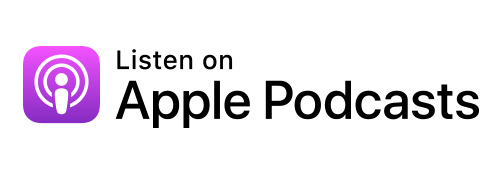

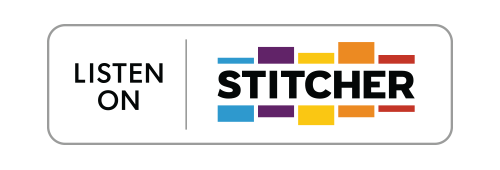


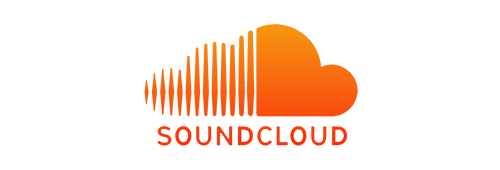

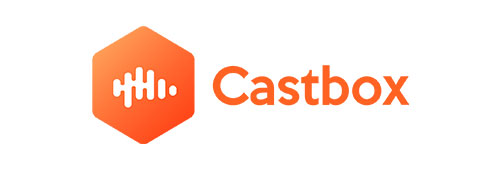
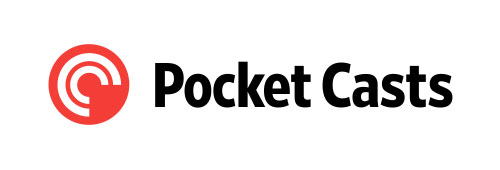
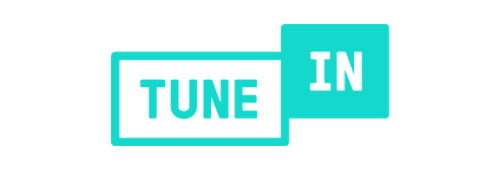
Leave a Reply